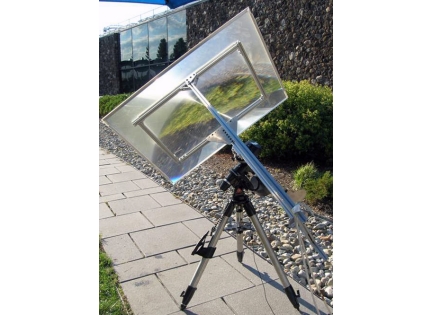IBM uses liquid metal to boost solar-cell efficiency

Computing giant IBM is in the process of developing technology that generates solar power more efficiently, aided by a liquid-metal cooling process.
IBM's system concentrates sunlight on a 1cm2 photovoltaic cell using a large lens, in a similar method to using a magnifying glass to start a fire. IBM claims the concentration increases the power of the sun's rays by a factor of 10, allowing cells that normally generate 20W of power to generate 200W instead.

One of the problems the technology's researchers had to overcome was how to avoid destroying the cells with the concentrated sunlight. In experiments, the researchers managed to melt stainless steel with the magnifying apparatus, so had to work out how to cool the solar cell efficiently.
Between the cell and a cooling block is a thin layer of liquid metal that conducts heat away from the solar cell to the cooling block. IBM researchers used a mixture of two metals with low melting points: gallium, a semiconductor, and indium, which is used in low-melting-point alloys. IBM already uses this technology to cool high-power chips.
IBM said that solar energy could be used to generate power on a commercial scale, provided that low-cost, efficient lenses could be developed.
"Concentrator-based photovoltaics can offer the lowest-cost solar electricity for large-scale power generation, provided the temperature of the cells can be kept low, and cheap and efficient optics can be developed for concentrating the light to very high levels," said IBM in a statement on Friday.
IBM is also developing nanotechnology structures, involving nanowires and quantum dot semiconductors, to make photovoltaic cells more efficient.